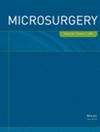Facial Artery Perforator Flap for Perioral and Perinasal Oncologic Defect Reconstruction: Surgical Technique and Postoperative Outcomes
Abstract
Introduction
Facial artery perforator (FAP) flap is a versatile and reliable one-step facial reconstruction technique. However, its full potential remains underutilized due to a lack of clear guidelines and rigorous technique requirements. This study report the use of FAP flaps in our centre for the management of perioral and nasal oncologic defects, focusing on surgical technique performed and post-operative management.
Methods
We conducted a retrospective review of all patients who underwent reconstruction with a perioral or perinasal FAP flap only following tumor resection over a 4-year period (n = 29). Parameters measured included flap survival, complication rates, surgical technique performed, and the need for touch-up procedures. Patients were grouped based on age, defect size, and location and outcomes were compared across these groups.
Results
The mean histological tumor defect area was 331 mm2. During at least 6 months of follow-up, no local recurrence was observed. Twenty-seven (93.1%) flaps survived completely. Major postsurgical complications occurred in seven (23.8%) patients, including complete flap necrosis (1), partial flap necrosis (1), flap collapse (1), venous congestion (1), wound dehiscence (1), and local infection (2). A higher complication rate was associated with nose tip defects (80.0% vs. 12.5%, p = 0.007). Touch-up procedures were more frequently required for reconstructions involving the nasal sidewall and dorsum (53.8% vs. 13.3%, p = 0.04).
Conclusion
Based on our experience, the FAP flap is highly effective for the reconstruction of the upper lip, nasolabial fold, and certain oncologic nasal defects. However, specific defect locations, such as the nose tip, may be associated with higher complication rates, necessitating careful patient selection and surgical planning.

 求助内容:
求助内容: 应助结果提醒方式:
应助结果提醒方式:


